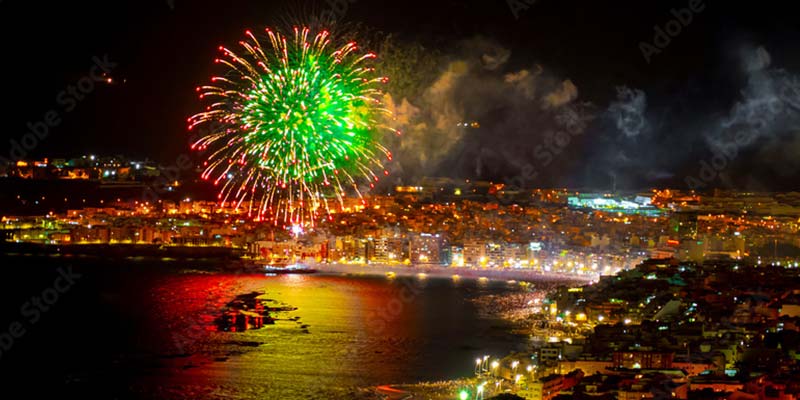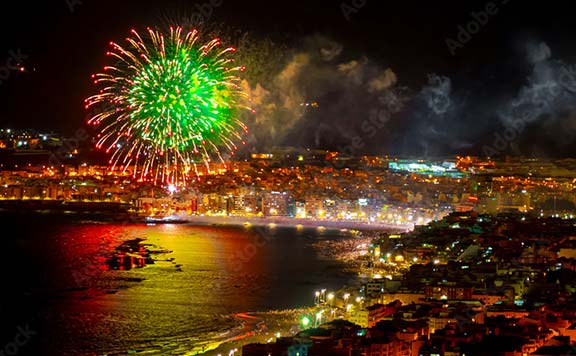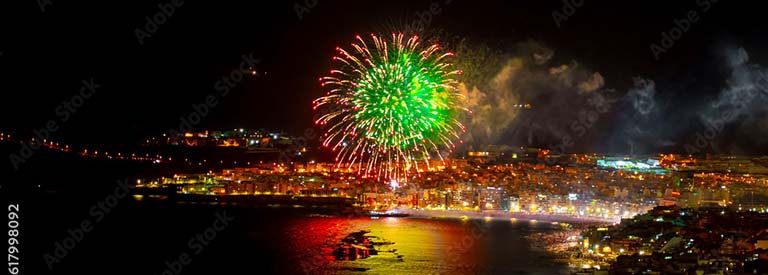St. John’s Eve Traditions Around the World
St. John’s Eve is celebrated around the world, especially in Spain and Latin America, each year on the night of June 23. Rooted in religion, it is now celebrated in a more cultural and festive way.



St. John’s Eve Traditions Around the World
St. John’s Eve is celebrated around the world, especially in Spain and Latin America, each year on the night of June 23. Rooted in religion, it is now celebrated in a more cultural and festive way.
St. John’s Eve is celebrated on the night of June 23, the eve of the feast day of St. John the Baptist on June 24. Although this holiday has a religious origin, it also has a special connection with nature and the summer solstice, a time of renewal and transformation. In many cultures, St. John's Eve is intertwined with mid-year celebrations that honor the power of fire and water as elements of purification and change.
Cultures around the world mark the changing seasons with similar traditions, showing our shared bond with nature and a wish for spiritual renewal.
St. John’s Eve, though rich in cultural and spiritual significance, remains a relatively unknown holiday across most of the United States. Its roots trace back mainly to European traditions, but in the U.S., it’s primarily celebrated in New Orleans — a city known for embracing its diverse heritage. There, the holiday is marked with rituals, music and gatherings that reflect its origins.
Interestingly, some cities in Texas, especially around the Dallas-Fort Worth area, also observe St. John’s Eve, or la Noche de San Juan, as it known in the Hispanic world. Thanks to vibrant Puerto Rican and Venezuelan communities, local events are often held in water parks and churches, blending cultural traditions with family-friendly fun. Many families also choose to celebrate quietly at home, keeping the spirit of the holiday alive in their own personal ways. Reliant is proud to be a positive influence in the places where we live and work, and we support events that celebrate culture and foster a sense of community.
St. John’s Eve is a big celebration throughout Spain. In Barcelona and other parts of Catalonia, it’s called the Nit de Sant Joan and celebrated with bonfires on the beach, fireworks and parties that last until dawn.
A popular tradition is to jump over bonfires to attract good luck. The Canigou Flame (Flama del Canigó) is a special tradition in this region. The flame is kept burning year-round in the castle of Perpignan, and the celebration begins every June 23 by renewing the fire at the top of Mount Canigou. A group of volunteers then light torches and take them to different towns and cities in Catalonia to light bonfires in a celebration that has become a symbol of the persistence and vitality of Catalan culture.
In Alicante, the St. John’s Bonfires, or Hogueras de San Juan, are a vibrant mix of art, fire and community, and the celebrations take place from June 20 – June 24. The festivities begin the week before with official inaugural events. Then, people build the papier-mâché monuments that become the bonfires of the city during the plantà. The main celebrations include fireworks displays, or mascletàs; parades with dancers from all over the world; and bullfights. The festivities conclude with the cremà, or the burning of the bonfires, followed by more fireworks on the beach.
St. John’s Eve is deeply linked to Puerto Rico’s history and culture. St. John the Baptist is not only the patron saint of the capital city of San Juan, but the island itself was named after him by Christopher Columbus when he arrived there on his second voyage. On St. John’s Eve, the beaches are filled with people celebrating the capital city's patron saint festival with music, food and sea rituals. You can always find concerts on the beach and other organized events. At midnight, it is tradition to dive backwards into the sea at least three times (some do it up to 12 times) to attract good luck and cleanse bad energies. This practice connects deeply with nature and the festive spirit of the Caribbean.
In the coastal regions of Venezuela, especially in Barlovento, St. John’s Eve is celebrated with drum processions, dancing and songs. In the central states, on the night of June 23, St. John’s Wake, or Velorio de San Juan, is celebrated, with a procession through the town the following day. Some believe that cutting your hair on St. John’s Eve will bring good luck, or that pouring an egg in a glass of water can allow you to see the future. The festivities have become an expression of Afro-Venezuelan pride, where music and spirituality are intertwined in a vibrant and ancestral celebration.
In Argentina, St. John's Day on June 24 is more widely celebrated than St. John’s Eve. Argentines celebrate the winter solstice, instead of the summer solstice celebrated in other parts of the world. People gather around fire pits to cook potatoes or sweet potatoes and then jump over the pits for good luck. In Tucumán, neighbors build straw, cloth and paper dolls that are then turned into bonfires, into which they throw papers with written wishes exactly at midnight on June 23, so that the smoke from the bonfire raises them to the heavens and asks for the wishes to be fulfilled.
In the Peruvian Amazon, the celebrations also include bonfires, dancing and baths for purification. An important part of the celebration is eating the juane, a traditional Peruvian rice tamale with meat, olives and boiled egg. The juane wrapper is usually round and made of bijao leaf, similar to the banana leaf, to represent the head of the saint.
In Panama, St. John the Baptist is the patron saint of the cities of Chitré and Aguadulce. July 24 is the most important day of the village festival, and there are processions, horseback rides and ritual baths in rivers. In Colombia, St. John’s Day is mainly celebrated in the regions of Tolima, Huila and Caquetá, where farmers there started the tradition to bring good luck for a successful rice harvest. In Tolima, the main events of the celebrations are music festivals and concerts.
No matter where or how you celebrate, it’s a time to let go of the negative, renew hope and enjoy time with your loved ones.
Select a category from the dropdown menu.